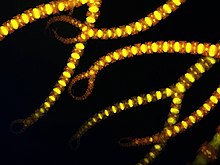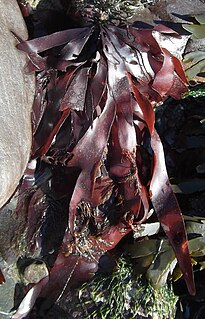
Palmaria palmata, also called dulse, dillisk or dilsk, red dulse, sea lettuce flakes, or creathnach, is a red alga (Rhodophyta) previously referred to as Rhodymenia palmata. It grows on the northern coasts of the Atlantic and Pacific Oceans. It is a well-known snack food. In Iceland, where it is known as söl[ˈsœːl̥], it has been an important source of dietary fiber throughout the centuries.

Polysiphonia lanosa is a common species of the red algae (Rhodophyta) often to be found growing on Ascophyllum nodosum.

Ceramium diaphanum is a species of marine red algae.
Polysiphonia denudata is a small red alga, Rhodophyta, growing as tufts up to 20 cm long without a main branch axis.
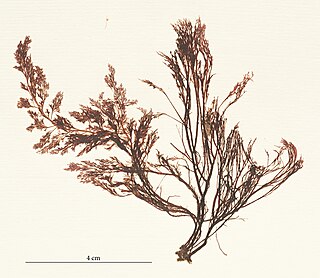
Polysiphonia elongata is a small red marine algae in the Rhodophyta.
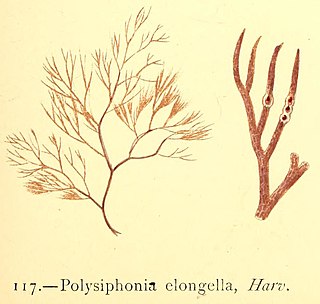
Polysiphonia elongella Harvey in W.J. Hooker is a branched species of marine red algae in the genus in the Polysiphonia in the Rhodophyta.

Melanothamnus harveyi, Harvey's siphon weed, is a small marine red alga in the division of Rhodophyta.
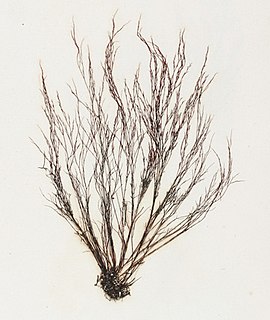
Polysiphonia nigra is a species of marine alga in the division Rhodophyta.
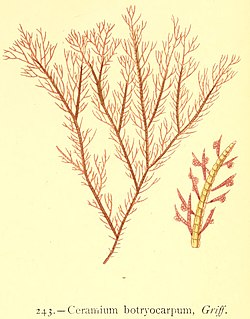
Ceramium botryocarpum is a small red marine alga in the Division Rhodophyta.

Ceramium echionotum is a small marine alga in the division Rhodophyta.
Ceramium flaccidum is a small red marine alga in the Division Rhodophyta.

Ceramium ciliatum is a small marine red alga in the Division Rhodophyta.
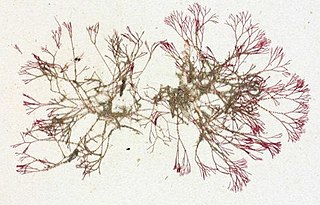
Ceramium cimbricum is a small red alga in the division Rhodophyta.
Ceramium pallidum is a small marine alga. It occurs in waters off of Europe and Africa (Morocco).
Ceramium secundatum is a small marine red alga.

Ceramium shuttleworthianum is a small marine red alga.
The taxon Ceramium siliquosum is a small marine alga. It belongs to the red algae genus Ceramium.

Membranoptera alata is a small red alga in the Rhodophyta.

Codium bursa is a green marine algae of medium size.

Gymnogongrus griffithsiae is a small uncommon seaweed.

